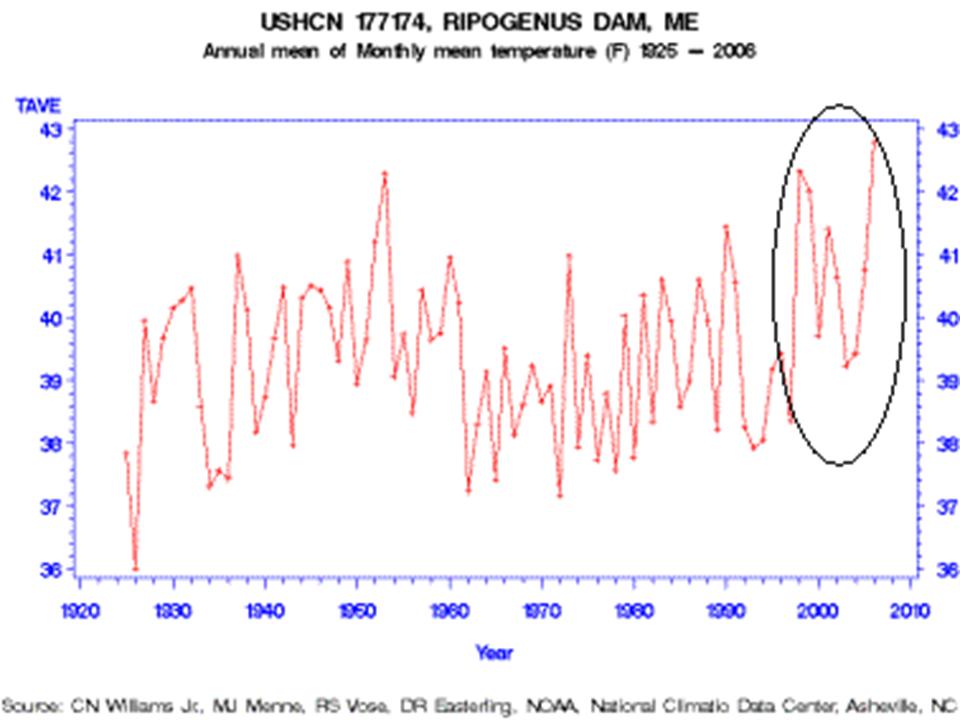How do you account for the divergence in the correlation between solar activity and global temperature since 1975?

The TSI reading on your chart could well be wrong.
Empirical analysis of the solar contribution to global mean air surface temperature change.
Journal of Atmospheric and Solar-Terrestrial Physics (2009),
doi:10.1016/j.jastp.2009.07.007 By Nicola Scafetta
Herein I have analyzed the solar contribution to global mean air surface temperature change. A comprehensive interpretation of multiple scientific findings indicates that the contribution of solar variability to climate change is significant and that the temperature trend since 1980 can be large and upward. However, to correctly quantify the solar contribution to the recent global warming it is necessary to determine the correct TSI behavior since 1980. Unfortunately, this cannot be done with certainty yet. The PMOD TSI composite, which has been used by the IPCC and most climate modelers, has been found to be based on arbitrary and questionable assumptions[Scafetta and Willson, 2009]*. Thus, it cannot be excluded that TSI increased from 1980 to 2000 as claimed by the ACRIM scientific team. The IPCC [2007] claim that the solar contribution to climate change since 1950 is negligible may be based on wrong solar data in addition to the fact that the EBMs and GCMs there used are missing or poorly modeling several climate mechanisms that would significantly amplify the solar effect on climate. When taken into account the entire range of possible TSI satellite composite since 1980, the solar contribution to climate change ranges from a slight cooling to a significant warming, which can be as large as 65% of the total observed global warming.
*Here is the Scarfetta and Willson paper:
A New Paper On Solar Climate Forcing “ACRIM-Gap And TSI Trend Issue Resolved Using A Surface Magnetic Flux TSI Proxy Model By Scafetta Et Al 2009
The abstract reads:
“The ACRIM-gap (1989.5-1991.75) continuity dilemma for satellite TSI observations is resolved by bridging the satellite TSI monitoring gap between ACRIM1 and ACRIM2 results with TSI derived from Krivova et al.’s (2007) proxy model based on variations of the surface distribution of solar magnetic flux. ‘Mixed’ versions of ACRIM and PMOD TSI composites are constructed with their composites’ original values except for the ACRIM gap, where Krivova modeled TSI is used to connect ACRIM1 and ACRIM2 results. Both ‘mixed’ composites demonstrate a significant TSI increase of 0.033%/decade between the solar activity minima of 1986 and 1996, comparable to the 0.037% found in the ACRIM composite. The finding supports the contention of Willson (1997) that the ERBS/ERBE results are flawed by uncorrected degradation during the ACRIM gap and refutes the Nimbus7/ERB ACRIM gap adjustment Fröhlich and Lean (1998) employed in constructing the PMOD.”
A statement in the conclusion reads
“This finding has evident repercussions for climate change and solar physics. Increasing TSI between 1980 and 2000 could have contributed significantly to global warming during the last three decades [Scafetta and West , 2007, 2008]. Current climate models [Intergovernmental Panel on Climate Change , 2007] have assumed that the TSI did not vary significantly during the last 30 years and have therefore underestimated the solar contribution and overestimated the anthropogenic contribution to global warming.”
Garbage in, Garbage out.
BTS





